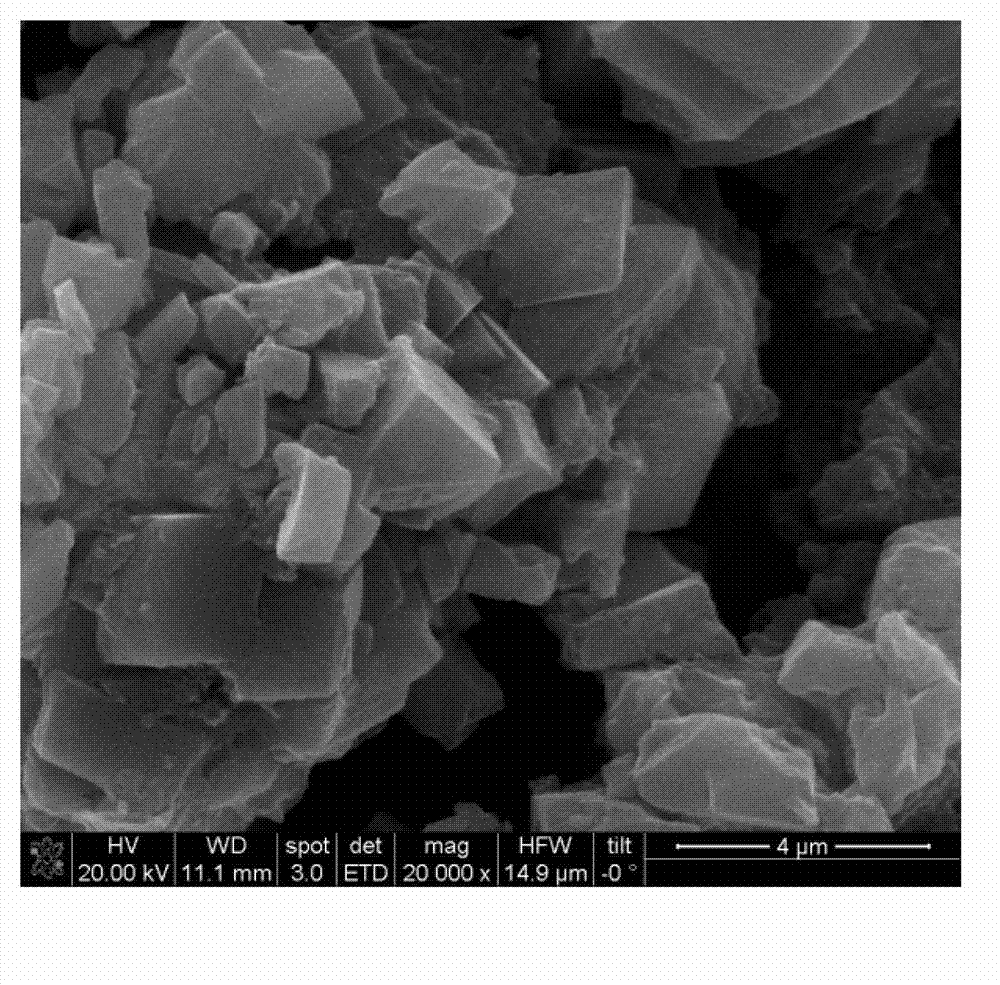LiFePO4 precursor hollow sphere and preparation method thereof
A technology of precursors and hollow spheres, which can be used in electrical components, battery electrodes, circuits, etc., and can solve problems such as difficult access to precursors
- Summary
- Abstract
- Description
- Claims
- Application Information
AI Technical Summary
Problems solved by technology
Method used
Image
Examples
Embodiment 1
[0026] 1. Weighing of raw materials: Weigh 1.2 g lithium hydroxide, 4.7 g iron phosphate, 1.6 g glucose and 9.6 g oxalic acid respectively, and measure 250 ml deionized water.
[0027] 2. Mixing: Mix the raw materials weighed above with deionized water, heat and stir to dissolve.
[0028] 3. Atomization: Pour the above solution into an ultrasonic nebulizer, and perform ultrasonic atomization at a frequency of 1.7MHz to form mist.
[0029] 4. Drying: The wind blows the droplets through a high-temperature furnace for drying at a drying temperature of 150°C, and collects irregular lumps of LiFePO after drying. 4 Precursor, scanning electron microscope photo as figure 2 shown. The schematic diagram of the device is as figure 1 shown.
Embodiment 2
[0031] 1. Weighing of raw materials: Weigh 1.2 g lithium hydroxide, 4.7 g iron phosphate, 1.6 g glucose and 9.6 g oxalic acid respectively, and measure 250 ml deionized water.
[0032] 2. Mixing: Mix the raw materials weighed above with deionized water, heat and stir to dissolve.
[0033] 3. Atomization: Pour the above solution into an ultrasonic nebulizer, and perform ultrasonic atomization at a frequency of 1.7MHz to form mist.
[0034] 4. Drying: The wind blows the droplets through a high-temperature furnace to dry at a temperature of 200°C. After drying, collect irregular lumps of LiFePO 4 Precursor, scanning electron microscope photo as image 3 shown.
Embodiment 3
[0036] 1. Weighing of raw materials: Weigh 1.2 g lithium hydroxide, 4.7 g iron phosphate, 1.6 g glucose and 9.6 g oxalic acid respectively, and measure 250 ml deionized water.
[0037] 2. Mixing: Mix the raw materials weighed above with deionized water, heat and stir to dissolve.
[0038] 3. Atomization: Pour the above solution into an ultrasonic nebulizer, and perform ultrasonic atomization at a frequency of 1.7MHz to form mist.
[0039] 4. Drying: The wind blows the droplets through a high-temperature furnace to dry at a temperature of 250 ° C. After drying, the hollow spherical LiFePO is collected. 4 The precursor, the outer diameter of the hollow sphere is 100nm-5um, and the shell thickness is about 27nm. Scanning electron microscope photos as Figure 4 As shown, the energy dispersive X-ray spectrum as Figure 7 As shown, the transmission electron microscope pictures are shown as Figure 10 shown.
PUM
| Property | Measurement | Unit |
|---|---|---|
| Outer diameter | aaaaa | aaaaa |
| Wall thickness | aaaaa | aaaaa |
Abstract
Description
Claims
Application Information
 Login to View More
Login to View More - Generate Ideas
- Intellectual Property
- Life Sciences
- Materials
- Tech Scout
- Unparalleled Data Quality
- Higher Quality Content
- 60% Fewer Hallucinations
Browse by: Latest US Patents, China's latest patents, Technical Efficacy Thesaurus, Application Domain, Technology Topic, Popular Technical Reports.
© 2025 PatSnap. All rights reserved.Legal|Privacy policy|Modern Slavery Act Transparency Statement|Sitemap|About US| Contact US: help@patsnap.com



